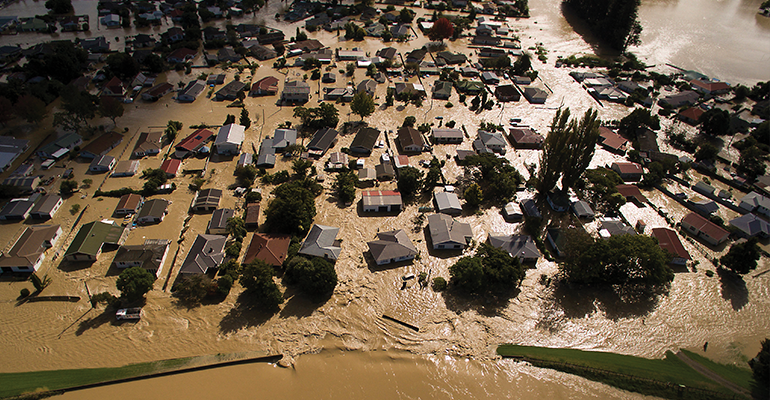- Impacts & Adaptation
Research Programme
- Ilan Noy
Te Herenga Waka | Victoria University of Wellington - View the full team
Project Lead
-
Budget
$154,000 -
Duration
May 2017-September 2019
-
Completed project
Extreme weather, climate change & the EQC
Earthquakes might not yet be predictable, but increasingly, climate change is. Because of climate change, extreme weather events in New Zealand may be getting worse and happening more often. What does this mean for our state-owned provider of natural hazard insurance – the Earthquake Commission (EQC) – and for the communities and regions directly affected by extreme weather?

Although the EQC mainly helps households suffering earthquake damage, homeowners impacted by extreme weather like storms, floods or landslips can also make EQC claims for some damages. (For floods and storms, for example, the EQC will only cover the cleanup of debris and mud from the land below a house; it won’t cover damage to the house or its contents.) More frequent and more intense weather can therefore affect the EQC’s long-term sustainability.
Over the last 20 years, the EQC has paid out over $240 million, on more than 17,000 claims, to households affected by non-earthquake disasters. This project studied these claims, along with data from Statistics NZ, GNS and NIWA, to better understand how the EQC has covered households over time and across regions after extreme weather events (these results are presented in the Motu Working Paper below). We also explored whether insurance pay-outs have supported households and communities to recover economically, and what the EQC’s financial liabilities might be into the future, given climate change projections about extreme weather.
In doing so, our intent was to enable local economies and the government to better understand and prepare for the financial challenges of climate change.
This project in the media:
- What will more rain do to EQC liabilities? Nine to Noon
- Climate change: EQC weather damage claims could rise by 25 per cent, NZ Herald
- Report forecasts future of weather-related insurance claims Nine to Noon, Radio NZ
- Coastal properties responsible for most EQC weather-related claims, Radio NZ
- New research finds the average property that’s claimed EQC cover for storm damage is twice as close to the coast as the average property in NZ, Interest.co.nz
- More weather-related EQC claims closer to the coast, NZ Herald
- How climate change could send your insurance costs soaring, Stuff.co.nz
- Climate change and insurance – Expert Reaction, Science Media Centre
- Insurance: the canary in the coalmine of climate change? Idealog
- How can NZ insure homes for climate change? NZHerald
- Sea level-prone homes set for insurance cutoff, Radio NZ
- Heads in the sand, houses in the water, Newsroom
- Breaking the ice, NIWA
PROJECT TEAM
-
Ilan Noy
Te Herenga Waka | Victoria University of Wellington -
Sally Owen
Te Herenga Waka | Victoria University of Wellington -
Jacob Pastor-Paz
Motu Economic and Public Policy Research -
Isabelle Sin
Motu Economic and Public Policy Research -
David Fleming-Munoz
Motu Economic and Public Policy Research